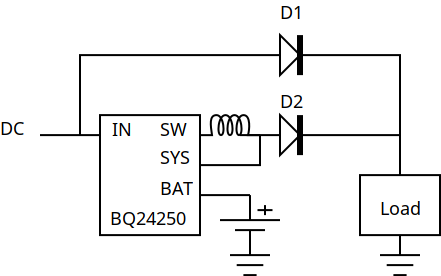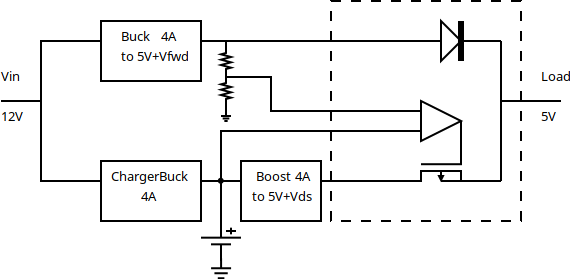Other Parts Discussed in Thread: BQ24190, BQ25606, BQ25601, BQ25895
I have a load that might draw up to 4A. I want to power this load either from battery when no DC is available, and from DC IN when it is available. While the load is powered, I want the battery to charge at a high charge current 1.5A or 2.0A).
From my reading of the datasheet:
maximum discharge current from battery to load: 4A [good news]
maximum input current to Vin: 2A [bad news]
Will the following work? And specifically, will the BQ charge the battery at full charge current? My reasoning is that it will because D1 will prevent SYS from ever drooping, even when the load pulls more than the 2A limit of the BQ, correct?
My rationale for D2 is that otherwise D1 will create a path from DC IN to BAT (via internal FET between SYS and BAT, when that FET is on), which does not seem right.



